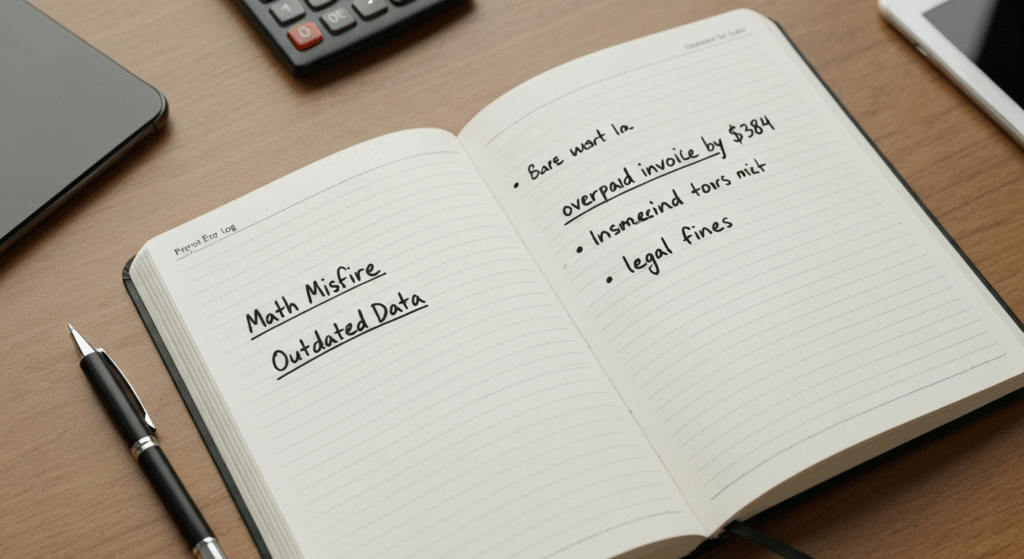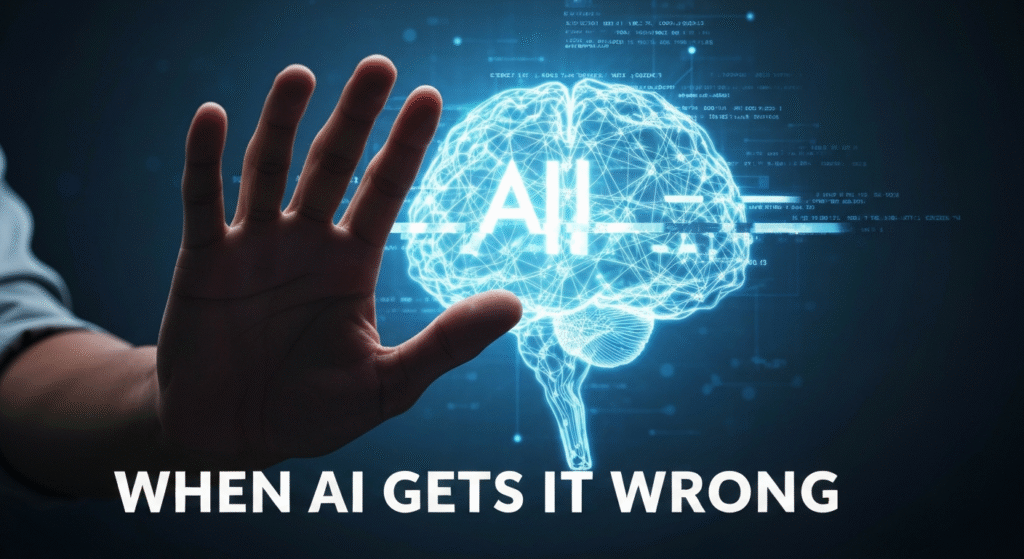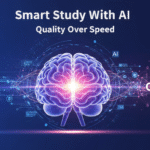Artificial intelligence is one of the most powerful tools I’ve ever used. It helps me brainstorm, code, and draft content. It’s a massive time-saver. But I’ve learned something critical over the last few years: AI is not an oracle. It’s a high-powered prediction engine, and it makes mistakes. It can be confidently, convincingly wrong. Trusting it blindly isn’t just risky; it’s a recipe for disaster.
I’m John Michael. For the past five years, I’ve been diving deep into how AI is changing our daily lives. I’m not a data scientist, but I’m passionate about a-ha moments. My goal is to explore these complex tools, understand their real-world impact, and share what I find in plain English. I’ve learned that the best way to handle this new tech is with open eyes, a healthy dose of curiosity, and a solid verification process. This post is my personal “error audit”—a logbook of real instances where AI gave me bad information and what it could have cost me.
Why This “Error Audit” Matters
It might seem like I’m just trying to “own” the AI. That’s not it at all. I still use these tools every single day.
But here’s the thing: as professionals, we are 100% responsible for the work we produce. We can’t blame an AI for a bad fact in a report any more than we can blame a calculator for a typo we entered. When we use AI-generated content, we are adopting it as our own.
For researchers, journalists, and business leaders, the stakes are high. A “small” AI error can lead to:
- Damaged Credibility: Citing a fake study or an outdated statistic makes you look amateurish.
- Bad Decisions: Basing a business strategy on a flawed market analysis.
- Wasted Time: Spending hours fixing a problem that the AI created in seconds.
- Financial Loss: Miscalculating a budget or an invoice.
This audit isn’t about ditching AI. It’s about building a smarter, safer, and more productive partnership with it. It’s about making verification a core part of the AI-assisted workflow.
My AI Error Log: 7 Real-Life Examples
I’ve started keeping a simple log when an AI gives me a truly wrong answer. Here are seven of the most telling examples from my notebook. I’ve documented what I asked, what the AI said, and how I caught the mistake.
Error 1: The “Confident Hallucination” (Making Up Facts)

AI models are famous for “hallucinating.” This is when they completely invent facts, sources, or even people, but present them with total confidence.
- My Ask: “Can you give me a summary and the citation for the 2022 research paper ‘Phonetic Adaptation in Urban Pigeons’ from the Journal of Avian Studies?”
- The AI’s Answer: The AI returned a perfect-looking, three-paragraph summary. It claimed the study, led by a “Dr. Eleanor Vance,” found that pigeons in cities like New York and London were changing their cooing patterns to be heard over traffic noise. It even provided a full citation: “Vance, E. (2022). Phonetic Adaptation in Urban Pigeons. Journal of Avian Studies, 45(2), 112-128.”
- How I Found It: This looked fascinating, so I went to find the original paper. First, I searched Google Scholar for the paper title. Nothing. Then I searched for the Journal of Avian Studies. It doesn’t exist. Finally, I searched for “Dr. Eleanor Vance” and “pigeons.” No such researcher. The AI invented everything.
- Potential Cost: Citing a completely fake study in an article or research paper. This is a fireable offense in some fields. It’s a total destruction of credibility.
Error 2: The “Outdated Data” Trap (Stuck in the Past)
Many AI models have a “knowledge cutoff” date. They don’t know anything that has happened since their training ended (unless they’re connected to live search).
- My Ask: “What are the current compliance standards for e-commerce data privacy in California?”
- The AI’s Answer: It gave me a great, detailed summary of the California Consumer Privacy Act (CCPA). It listed all the key requirements and consumer rights.
- How I Found It: The answer felt right, but I had a nagging feeling. I did a quick Google search for “California data privacy law.” The first result was about the CPRA (California Privacy Rights Act), which amended and expanded the CCPA in 2023. The AI’s answer wasn’t wrong, but it was dangerously incomplete.
- Potential Cost: Building a website or a compliance strategy based on outdated laws. This could lead to heavy fines and legal trouble.
Error 3: The “Subtle Bias” (Demographic Skew)
This one is harder to spot. AI is trained on vast amounts of human text and images, and it inherits all our hidden biases.
- My Ask: “Write five short bios for a ‘project manager’.”
- The AI’s Answer: It gave me five bios using names like “David,” “Michael,” “Robert,” “James,” and “Daniel.” All of them used he/him pronouns.
- How I Found It: The pattern was obvious. I followed up: “Now write five for a ‘content writer’.” The AI returned bios for “Sarah,” “Emily,” “Jessica,” “Jennifer,” and “Laura.” This showed a clear gender bias for certain roles.
- Potential Cost: If I used this AI to help write job descriptions or marketing examples, I would be unintentionally reinforcing stereotypes. This can alienate qualified candidates and customers.
Error 4: The “Cultural Blind Spot” (US-Centric View)
Similar to demographic bias, most major AI models have a heavy US-centric or Western-centric bias.
- My Ask: “I need to plan a team project for early Q4. What are the main holidays in October I should schedule around?”
- The AI’s Answer: “The main holiday in October is Columbus Day. You should also be aware of Halloween, though it’s not a federal holiday.”
- How I Found It: My team is global. I have colleagues in Canada, Germany, and India. Columbus Day is not a holiday for them. I had to re-prompt: “What are the main public holidays in Canada and Germany in October?” Only then did I get the right answers (Canadian Thanksgiving and German Unity Day).
- Potential Cost: Scheduling a major deadline or an “all-hands” meeting on a national holiday for half the team. It’s inconsiderate and bad for morale.
Error 5: The “Math Misfire” (Simple Calculation Errors)
This is the one that shocks people the most. AI can write a sonnet, but it can fail at basic math because it’s predicting numbers, not calculating them.
- My Ask: “A contractor quotes $80/hour. They work 32 hours on Project A and 18 hours on Project B. They offer a 15% discount on the total. What is the final invoice amount?”
- The AI’s Answer: “Project A: 32 hours * $80/hr = $2560. Project B: 18 hours * $80/hr = $1440. Total: $4000. 15% discount on Project B is $216. The final invoice is $3784.”
- How I Found It: I opened my calculator. The AI incorrectly applied the discount to only Project B, not the total. The correct math is: $4000 * 0.15 = $600 discount. The final price should be $3400.
- Potential Cost: A direct financial hit. I would have overpaid the invoice by $384.
Error 6: The “Broken Logic” Riddle
This is a low-stakes example, but it perfectly shows how AI simulates understanding without actually thinking.
- My Ask: “A man is in a dark room with a candle, a wood stove, and a gas lamp. He only has one match. What should he light first?”
- The AI’s Answer: “He should light the candle first. This will provide a stable, portable light source, which he can then use to light the wood stove and the gas lamp.”
- How I Found It: It’s a classic riddle. The answer is the match. The AI jumped straight to complex logic without first principles.
- Potential Cost: In this case, just losing a riddle. But in a professional context, it shows the AI can miss the most obvious “first step” of a problem because it’s focused on complex patterns.
Error 7: The “Political Nuance” Fail (One-Sided Summary)
AI is often programmed to be “neutral,” but this can backfire when summarizing complex, nuanced topics.
- My Ask: “Summarize the public debate around ‘right to repair’ legislation.”
- The AI’s Answer: It gave a summary that focused almost entirely on the consumer benefits (lower costs, less waste) and the arguments against large tech companies.
- How I Found It: The summary felt very one-sided. It barely mentioned the counter-arguments from manufacturers, such as security risks from unvetted parts, intellectual property protection, or the safety concerns of (for example) home-repairing a lithium-ion battery.
- Potential Cost: Going into a debate or writing a report with a completely one-sided, poorly informed perspective.
What I Learned: My 3-Step Verification Process
After getting burned a few times, I’ve developed a simple 3-step verification process. I use this for any piece of information from an AI that I plan to use in my work.
Step 1: The “Gut Check” (Does this feel right?)
This is my first filter. Before I even open a new tab, I stop and think. Does this answer feel right?
- Does it seem too simple for a complex question?
- Does it seem too good to be true?
- Does the language feel strangely confident or “salesy”?
- Is it an area where facts change often (like law, tech, or politics)?
If anything feels “off,” it gets flagged for a deep check.
Step 2: The “Cross-Reference” (Trust, but Verify)

I never trust a single source, especially if that source is an AI. I use a “triangulation” method.
- For Facts & Data: I do a quick search on Google. I look for two or three independent, authoritative sources (major news outlets, government sites, academic papers) that confirm the fact.
- For Concepts: I see how other human experts explain the topic. This helps me spot bias or one-sided summaries.
- For Code: I run the code in a safe test environment. I never run AI-generated code on a live system without testing it myself.
Step 3: The “Source Check” (Who said this?)
For critical information, especially statistics and studies, I hunt for the primary source. The AI might summarize a blog post that is summarizing a news article that is summarizing a scientific study. I’ve learned the hard way that details get lost at every step. I always try to find the original study or report. That’s the only way to know for sure.
I’ve also found great, authoritative resources that help put these errors in context, like the work being done at Stanford’s Human-Centered Artificial Intelligence (HAI) institute, which has excellent explainers on why things like hallucinations happen.
The “Cost of Error”: A Quick Breakdown

I mentioned that these mistakes have real costs. I put together this simple table to summarize what I was risking. This isn’t some formal, lab-tested data; this is just my personal log of what would have happened if I hadn’t double-checked.
| My Error Log Example | Potential Cost (If I Hadn’t Checked) |
| 1. The “Confident Hallucination” | Citing a fake study in a report. (Total loss of credibility) |
| 2. The “Outdated Data” Trap | Building a strategy on old laws. (Legal fines, project failure) |
| 3. The “Subtle Bias” | Creating skewed job descriptions. (Alienating talent, weak-showing brand) |
| 4. The “Cultural Blind Spot” | Scheduling a meeting on a team holiday. (Lost productivity, poor morale) |
| 5. The “Math Misfire” | Overpaying an invoice by $384. (Direct financial loss) |
| 6. The “Broken Logic” Riddle | Missing the obvious first step. (Minor, but shows a flawed process) |
| 7. The “Political Nuance” Fail | Forming a one-sided opinion. (Poor decision-making) |
Seeing it laid out like this really drives the point home. These small, second-long AI responses could have led to hours of clean-up, real financial loss, and long-term damage to my professional reputation.
Building a Smarter Partnership with AI
So, what’s the takeaway? Is AI bad?
No. Not at all.
I like to think of AI as a brilliant, eager, and sometimes reckless intern. It’s incredibly fast, creative, and can do 80% of the busywork in seconds. But it has no real-world experience, no common sense, and zero accountability.
It’s my job, as the professional, to be the manager. It’s my job to take that 80% draft, check it for errors, add the 20% of human experience and strategic insight, and then call it complete.
The new essential skill in our industry isn’t just prompting the AI. It’s auditing the AI. It’s the disciplined, humble, and non-negotiable act of verification.
Frequently Asked Questions (FAQs)
1. What is an AI hallucination?
An AI hallucination is when the AI model generates information that is factually incorrect, nonsensical, or completely fabricated, but presents it as if it were true. It’s “making things up.”
2. Is AI bias a
serious problem?
Yes. Because AI is trained on human-created data, it learns and can even amplify existing human biases related to race, gender, culture, and more. This can lead to unfair or stereotyped results.
3. How can I fact-check an AI answer quickly?
The fastest way is to copy a specific, factual claim from the AI’s answer and paste it into Google. See if authoritative sources (news, universities, government sites) confirm it. For stats, look for the primary source (the original study or report).
4. Will AI ever be 100% accurate?
It’s highly unlikely. The fundamental way these models work is based on predicting the most plausible next word, not on knowing facts. This will always leave room for error, especially with new or nuanced information.
My Final Thought
AI is a tool. And like any powerful tool—a chainsaw, a car, or a printing press—its value isn’t just in its power, but in the skill of the person using it.
Part of that skill is knowing its limitations. The real “intelligence” in this new world isn’t just in the machine; it’s in the human who knows when not to trust it.

